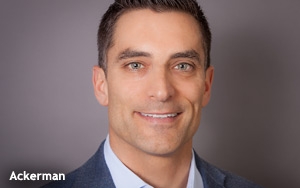
There are fairly bullish projections for programmatic ad spending in 2016. In
AdRoll research, 66% of advertisers polled said they plan to increase their
programmatic ad spend in 2016—and that’s just of several data points on the programmatic ad spending projections.
Part of the reason for enthusiasm over programmatic is that
87% of the marketers polled say they’re enjoying higher ROI via programmatic advertising vs. traditional media buys.
In its annual “State of Video Report” 2015, AOL research
went further, suggesting that programmatic TV is gaining popularity as audience fragmentation hits an inflection point.
The report projected that over the next year, 41% of television
buyers—a 3x increase since 2014—plan to rely on programmatic technology to make more strategic TV investments. Moreover, according to the report, advertisers and agencies would commit more
than 30% of their overall video budgets to branded video content—and brands plan to grow those investments 10% in the next year.
Most marketers make a distinction between programmatic TV
and programmatic video buys, which makes buying and planning rather confusing for them, at least for now. In addition, these buys often come from different budgets, said Dan Ackerman SVP, ONE by AOL,
and head of programmatic TV globally for AOL Platforms.
Ackerman and his team are tasked with applying the principles of data-driven automation to simplify and streamline the TV and video
advertising industries. Ackerman came to AOL by way of the company’s 2013 acquisition of Adap.tv, where he was senior vice president of programmatic TV. Previously, Ackerman led ad strategy and
innovation for CBS Local Media for 14 years, and held senior leadership roles at WideOrbit and Jivox.
Ackerman and his team are also doing tons of education with clients and agencies about the
potential for programmatic TV and the experience of programmatic TV vs. programmatic video.
In its annual “State of Video Report” 2015, AOL research went further to suggest that
programmatic TV “is gaining popularity as audience fragmentation hits an inflection point.” The report projected that over the next year (2016), 41% of television buyers—a 3x
increase since 2014—plan to rely on programmatic technology to make more strategic TV investments. Moreover, the report said that advertisers and agencies would commit more than 30% of their
overall video budgets to branded video content. And, it said, brands plan to grow those investments 10% in the next year.
Ackerman and his team are tasked with applying the principles of
data-driven automation to simplify and streamline the TV and video advertising industries.
Ackerman believes few, if any hurdles exist for programmatic video, which he characterized as a
“rocket ship that’s growing rapidly.” I hadn’t heard the growth metaphor put quite that way before. Hurdles for buying programmatic TV remain significant and include a lack of
standardization, resources, transparency, technology integrations and education. And yet, marketers are dying for the opportunity to align TV buying and measurement with digital video.
The AOL
report indicates that while the outlook for programmatic TV is positive, the TV ad industry needs to overcome significant obstacles before data-driven and automated TV buying becomes the industry
standard. Buyers lament the lack of data standardization when it comes to programmatic TV.
Because television buyers can’t transact against custom digital audiences and rely on
traditional demographic criteria, disparities in data and limited targeting capabilities obstruct increased programmatic TV buying adoption.
Overall, there needs to be more education for media
owners and buyers: “We need more education on data and automation for better decisioning and the automation of the transactions,” Ackerman explained, adding, “While there are amazing
new datasets for targeting in programmatic TV, there’s no standardization.” He said an independent working group, the Programmatic TV Standards Group, and the TVB are working on
standards.
Another barrier, as he sees it, is that media owners need to be willing to participate and be open to a different kind of transaction model, whether it’s based on different
datasets or using automation. Media owners need to know how these things will work together and how to prove their impact of the data. “We need to bring TV and digital video together.”
One way AOL is attempting to do so: with its Convertro platform, which offers multi-touch attribution modeling technology for brands and agencies. The platform offers specific ROI intelligence
about how all the media channels are performing and working in concert with one another.
Ackerman maintains that programmatic TV isn’t an outlier—it’s part of
marketers’ strategies. Asked what percentage programmatic TV will comprise of the overall TV ecosystem in 2016, Ackerman said it would probably be in the 3% range. “That’s a few
billion dollars, so it’s material.”
He went on to explain further: “When I say 3%, that includes spending on automation and data that’s driving planning decisions,
optimization, audience measurement and ROI attribution."
Ackerman drove home this message: At the point of execution, programmatic video and programmatic TV are very different in terms of key
performance indicators. The digital video environment is impression-based, and advertisers have more control in the way they serve ads and manage messaging in real-time. In programmatic TV, it’s
a different story and the viewing experience is very different: “We need to understand each one of those screens.” Buying, execution, campaign
measurement and execution have distinct attributes when it comes to programmatic video and programmatic TV.
The bottom line: More marketers are asking how they can have the same opportunities
they have vis-à-vis data, accountability and attribution that they have in digital video with programmatic TV. It’s going to take a lot of
education.